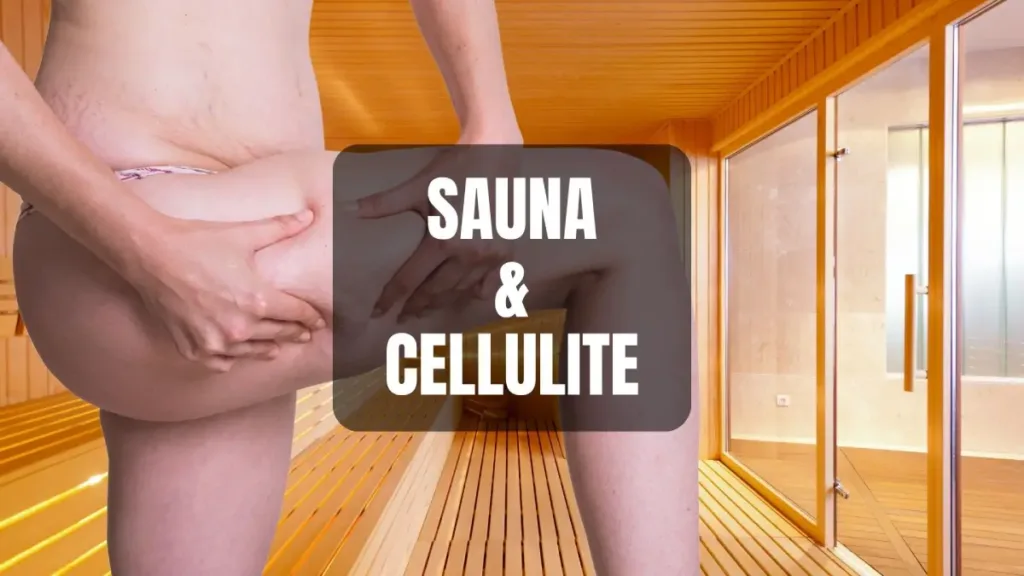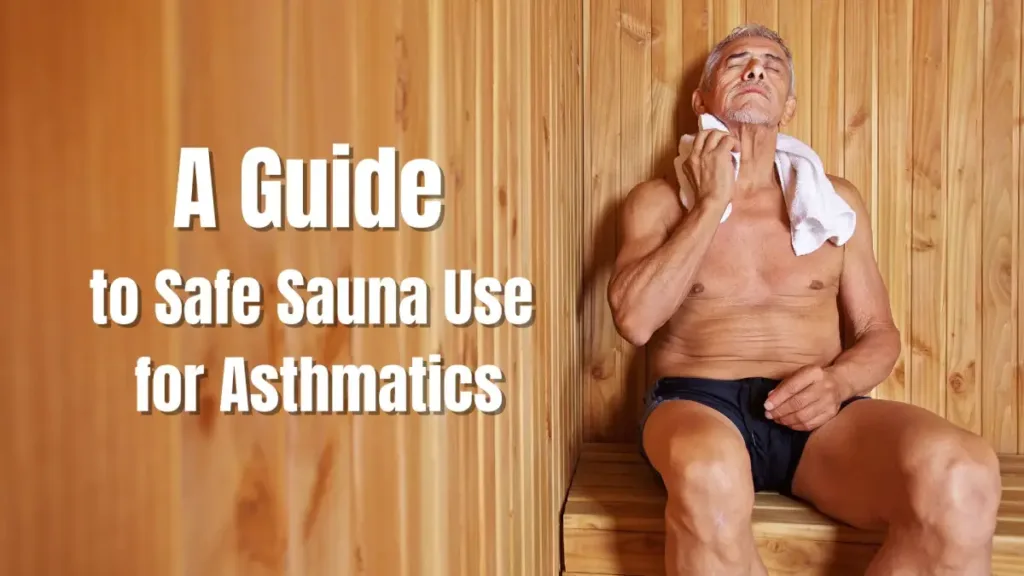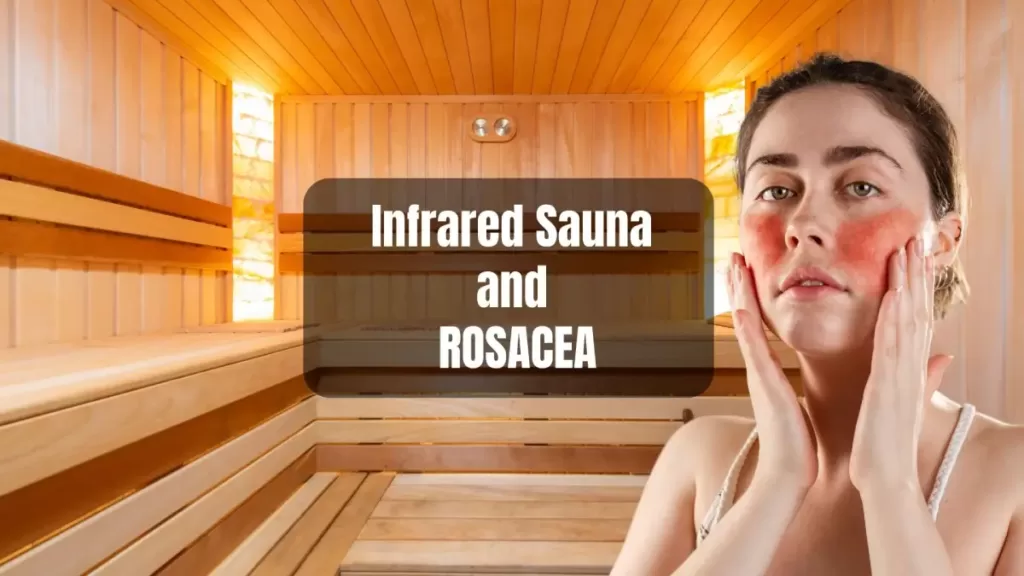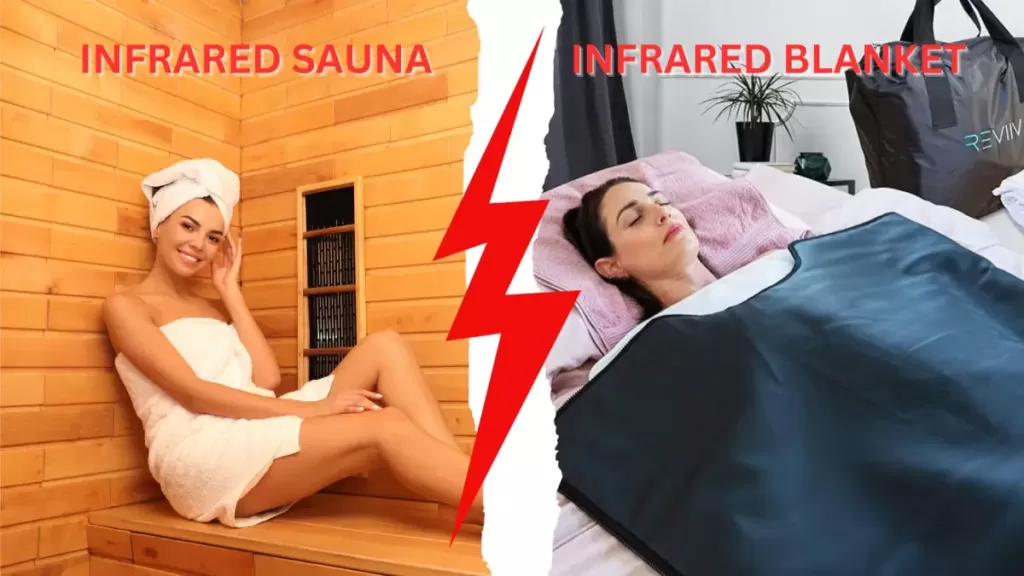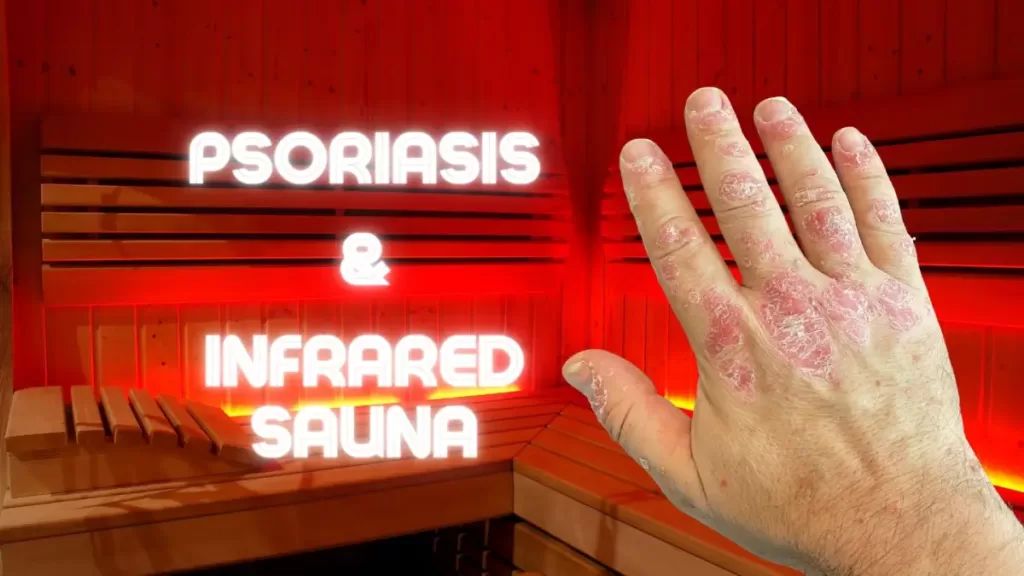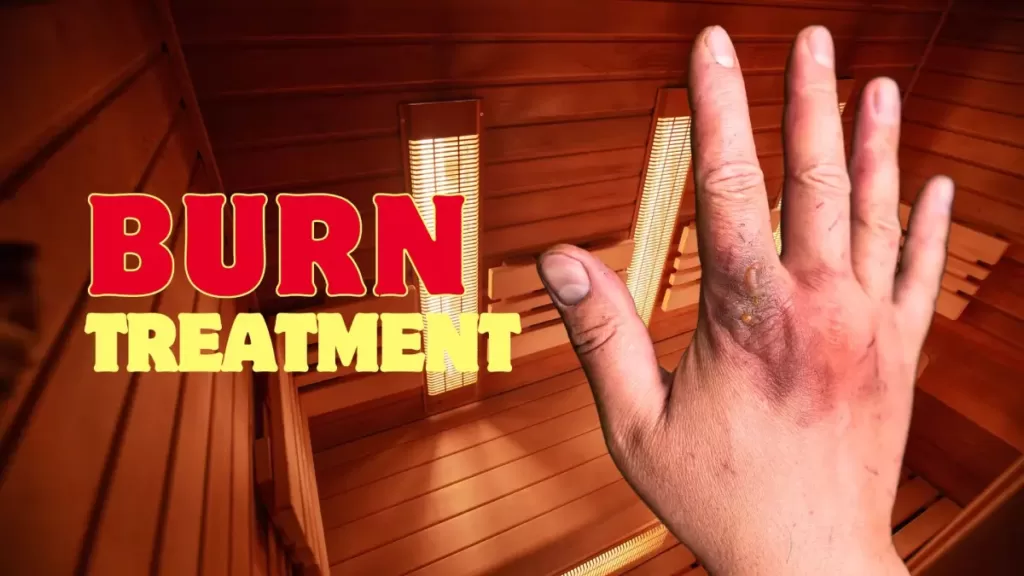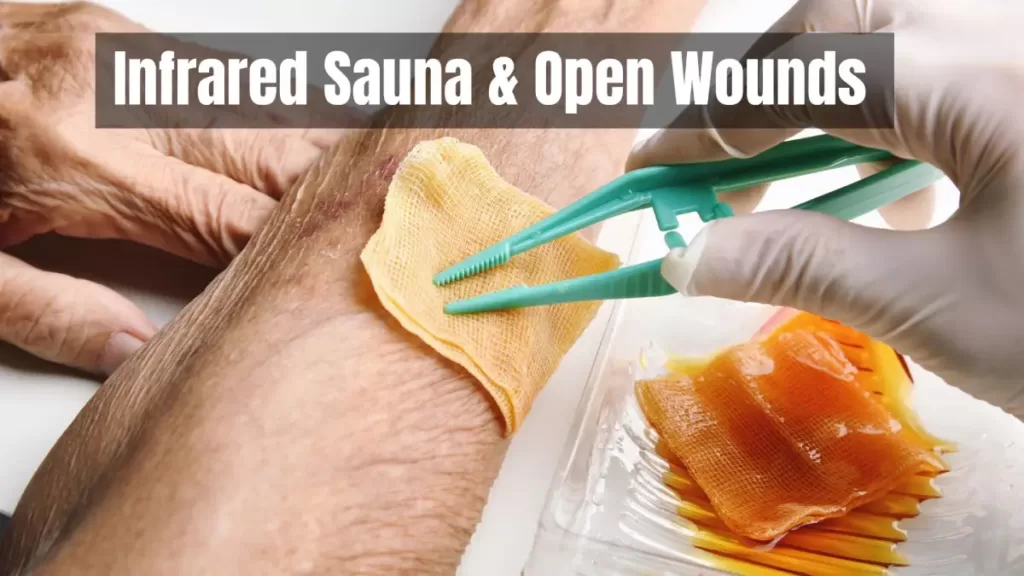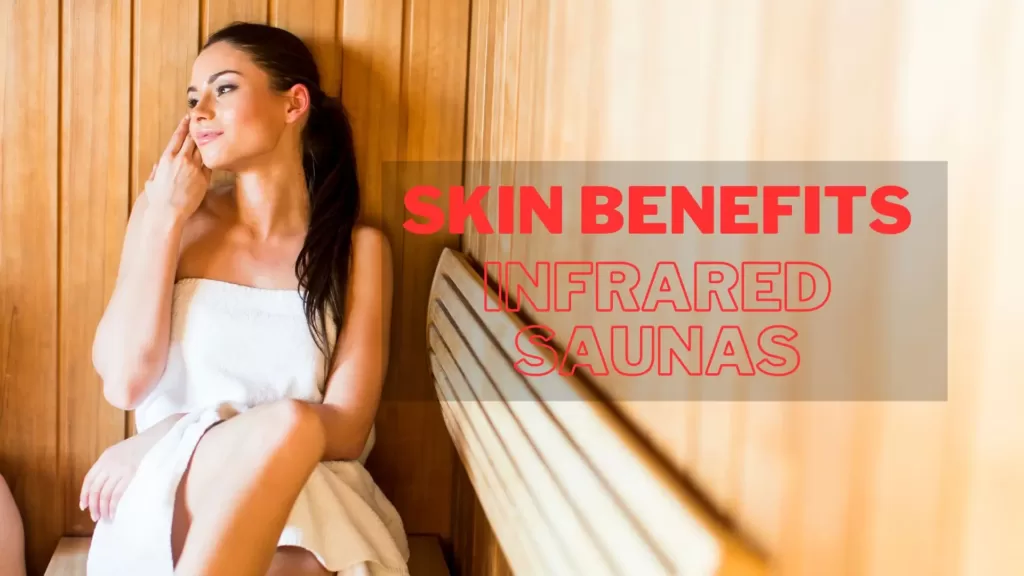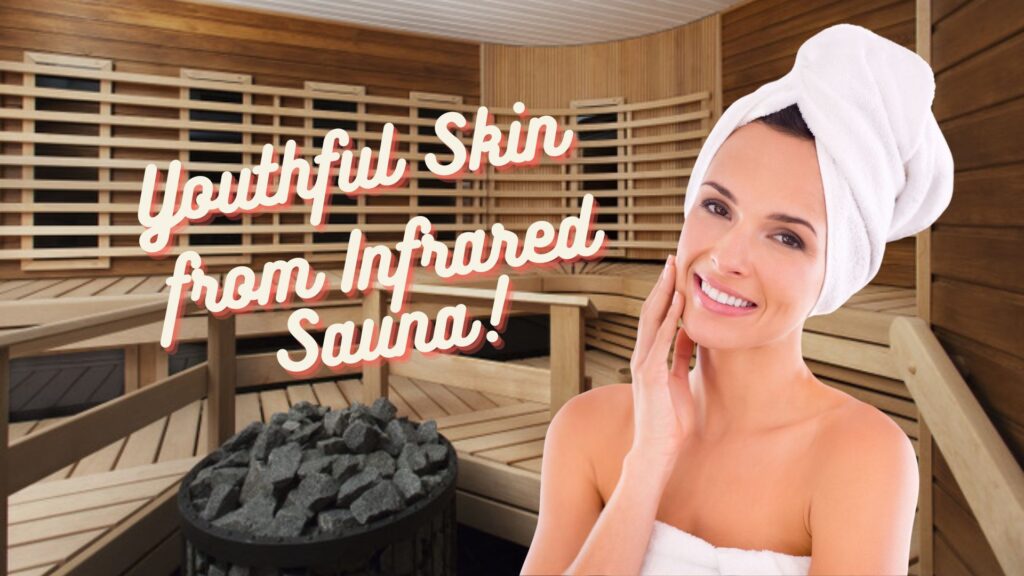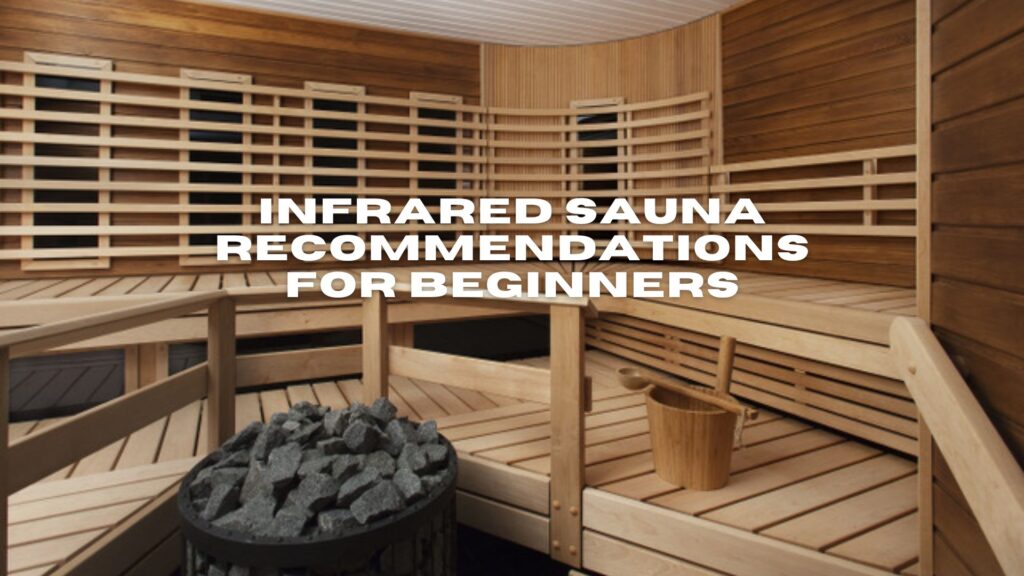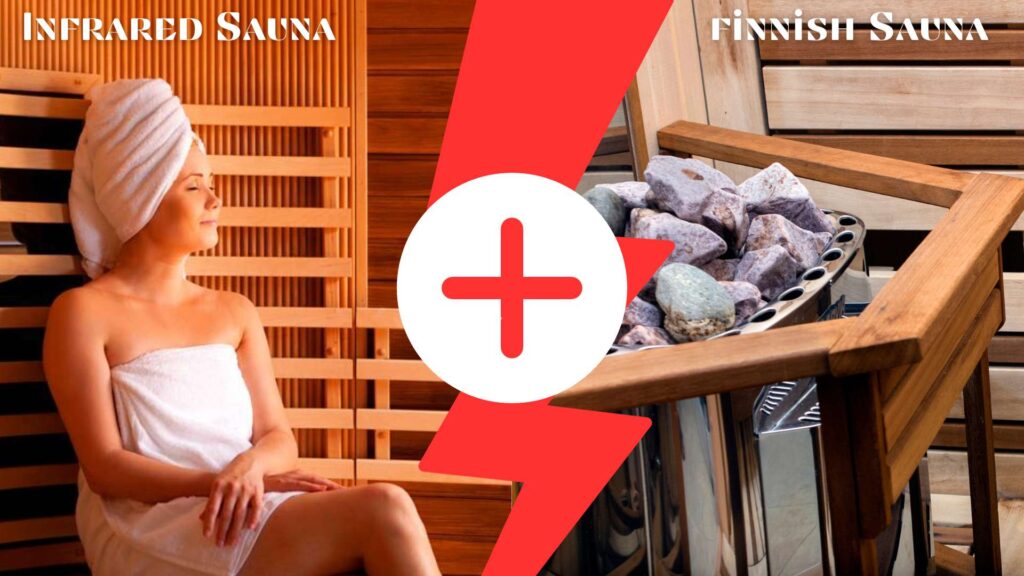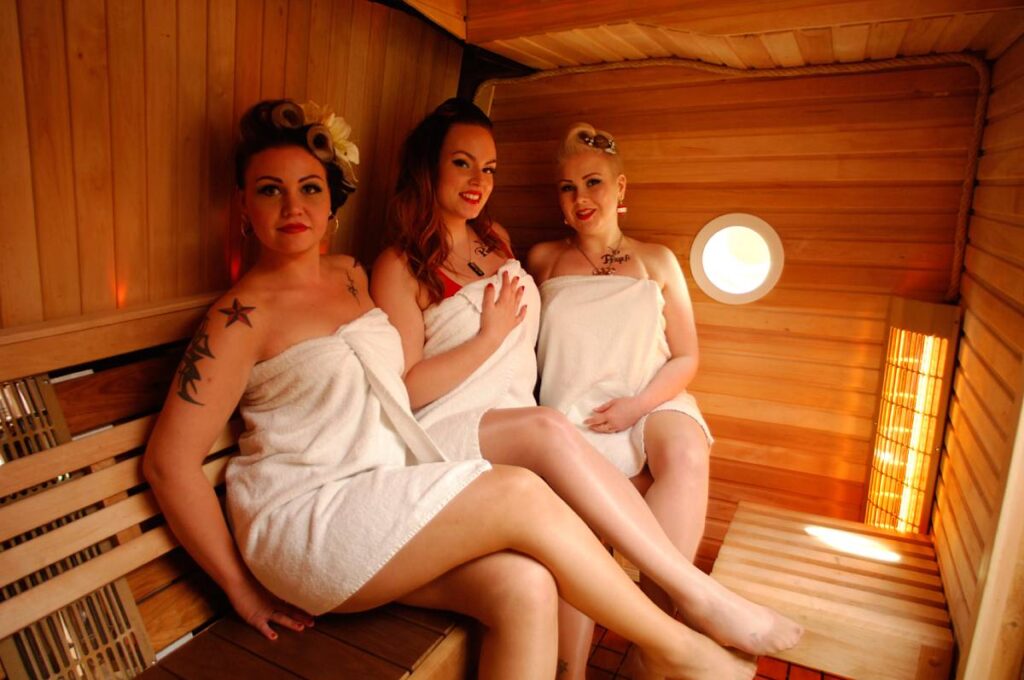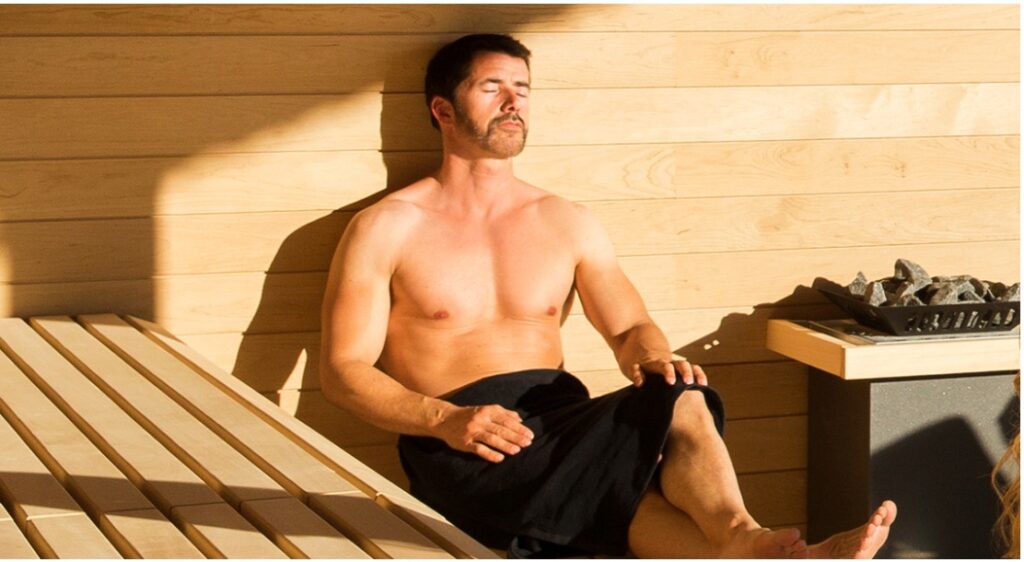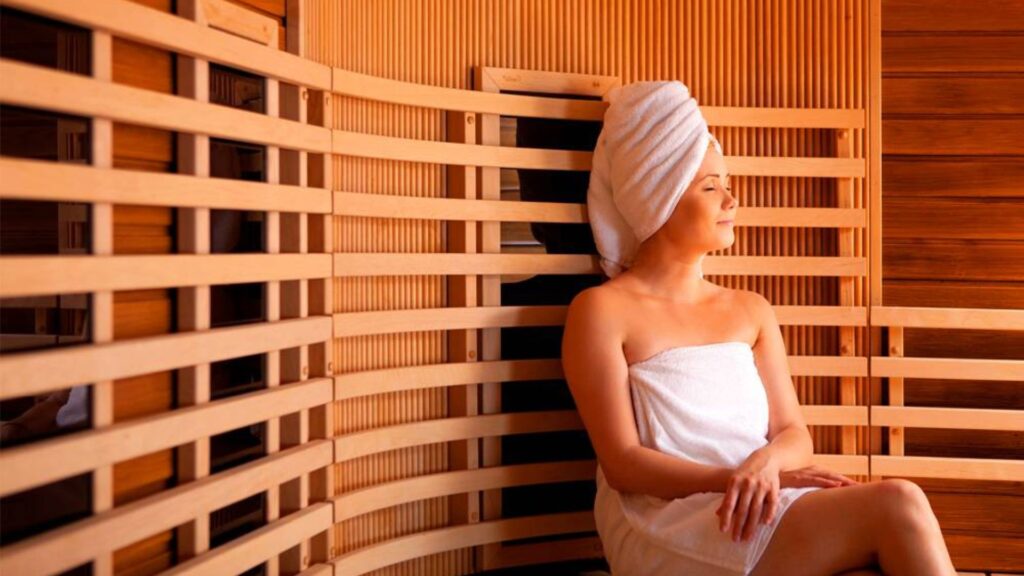
Experience Relief: Infrared Sauna Rosacea Treatment Options
If you suffer from rosacea, you know how uncomfortable and sometimes painful it can be. Fortunately, there are options for relief, including traditional treatments such as topical creams and oral medications. However, these treatments may come with limitations and challenges that can make them less effective than desired.
This is where infrared sauna therapy comes in. In recent years, there has been growing interest in the use of infrared sauna for rosacea treatment due to its potential to provide relief without some of the drawbacks of traditional treatments. Infrared sauna therapy uses heat to promote circulation, boost immunity, and reduce inflammation, which can all be beneficial for individuals with rosacea.
Key Takeaways:
- Infrared sauna therapy is emerging as a potential treatment option for individuals with rosacea.
- This therapy uses heat to promote circulation, boost immunity, and reduce inflammation, all of which can be beneficial for rosacea sufferers.
- Traditional treatments for rosacea, such as topical creams and oral medications, may have limitations and challenges that make them less effective than desired.
- Using infrared sauna for rosacea treatment requires some best practices, including recommended session duration, temperature settings, and precautions to take.
- Scientific evidence supports the use of infrared sauna for rosacea treatment, making it a promising option worth considering.
Understanding Rosacea: Causes and Symptoms
Rosacea is a chronic skin condition that affects millions of people worldwide. It is characterized by redness, flushing, and visible blood vessels on the face, along with bumps and pimples that can be mistaken for acne.
The exact cause of rosacea is not fully understood, but research suggests that genetics, immune system dysfunction, and environmental factors may all play a role. Some common triggers of rosacea include sun exposure, stress, hot and cold weather, spicy foods, and certain medications.
| Rosacea Causes | Rosacea Symptoms |
|---|---|
| Genetics | Redness on the central face |
| Immune system dysfunction | Bumps and pimples that resemble acne |
| Environmental factors | Visible blood vessels on the face |
| Eye irritation and dryness |
Rosacea affects people of all ages and skin types, but it is most common in fair-skinned individuals of Northern European descent. Women are also more likely than men to develop rosacea, although the condition is generally more severe in men.
If you suspect that you may have rosacea, it is important to consult with a dermatologist or healthcare provider for an accurate diagnosis and personalized treatment plan.
Traditional Rosacea Treatments: Limitations and Challenges
Rosacea is a chronic skin condition that can be challenging to manage. Traditional treatments include topical creams, oral antibiotics, and other medications. However, these treatments have limitations and challenges that may not work for everyone with rosacea.
Topical creams: Rosacea creams can help reduce inflammation and redness. However, these creams are not always effective for everyone, and they can be costly. They also require consistent application, which can be inconvenient.
Oral medications: Antibiotics are often prescribed for rosacea treatment. However, long-term use of antibiotics can have adverse effects on gut health, and may not be effective in treating all types of rosacea.
More invasive treatments, such as laser therapy and dermabrasion, may be effective for some individuals with rosacea. However, these treatments can be expensive and carry risks of side effects, including scarring and hyperpigmentation.
These limitations and challenges highlight the need for alternative solutions for rosacea treatment. In the following sections, we will explore the benefits of using infrared sauna therapy for relief from rosacea symptoms.
How Infrared Sauna Works for Rosacea Treatment
Rosacea is a chronic skin condition that causes redness, swelling, and irritation, primarily on the face. Traditional treatments for rosacea, such as topical creams and oral medications, provide limited relief and often come with undesirable side effects. However, infrared sauna therapy offers a natural and safe alternative for reducing the symptoms of rosacea.
What is Infrared Sauna Therapy?
Infrared saunas use a type of light that penetrates deeper into the skin than traditional saunas. The heat from infrared rays helps to increase blood circulation, which can reduce inflammation and improve skin health. Individuals with rosacea can benefit significantly from infrared sauna therapy, as it can offer relief from redness, swelling, and other associated symptoms.
How Does Infrared Sauna Therapy Work?
When individuals with rosacea enter an infrared sauna, the heat from the infrared rays induces a thermal effect, which increases blood flow to the skin. This increased circulation helps to deliver essential nutrients to the skin and remove waste and toxins from the body. As a result, the skin becomes healthier, brighter, and clearer, reducing redness and other symptoms associated with rosacea.
The Unique Benefits of Infrared Heat for Rosacea Treatment
Infrared heat is unique in that it can penetrate deeper into the skin than traditional heating sources. This deeper penetration results in a more significant thermal effect, causing more significant benefits for the skin. Infrared heat can also penetrate through clothing, making it an ideal option for individuals with rosacea who may be sensitive to heat.
Moreover, infrared heat is gentle on the skin, making it a safe option for individuals with rosacea. Unlike traditional heating sources that can cause skin irritation, infrared heat can actually improve skin health by reducing inflammation and promoting collagen production.
Benefits of Infrared Sauna for Rosacea
Using infrared sauna as a treatment option for rosacea can provide a range of benefits for individuals with this skin condition. Some of the key benefits of infrared sauna therapy for rosacea include:
- Reduces redness: Infrared heat can penetrate deep into the skin and help reduce the appearance of redness associated with rosacea.
- Improves circulation: Infrared sauna therapy can help stimulate blood flow, which can promote skin health and reduce inflammation.
- Relieves inflammation: The anti-inflammatory effects of infrared heat can help soothe the skin and reduce inflammation associated with rosacea.
- Promotes relaxation: Infrared sauna therapy can help reduce stress levels and promote relaxation, which can have a positive impact on overall well-being.
In addition to these specific benefits, using infrared sauna for rosacea treatment can also promote overall skin health. The deep-penetrating heat can help eliminate toxins and improve skin elasticity, giving the skin a healthier, more youthful appearance.
Tip: To maximize the benefits of infrared sauna for rosacea treatment, consider incorporating other skincare practices into your routine, such as gentle cleansing and moisturizing with rosacea-friendly products.
Best Practices: Using Infrared Sauna for Rosacea
When using infrared sauna for rosacea, it is important to follow certain best practices to ensure safe and effective results. Here are some tips to keep in mind:
- Start with shorter sessions. For beginners, it is recommended to start with shorter sessions of 10-15 minutes and gradually increase the duration over time.
- Stay hydrated. Drinking water before and after each session is essential to avoid dehydration and replenish fluids lost through sweating.
- Choose the right temperature. The optimal temperature for an infrared sauna session is typically between 110-130°F (43-54°C). However, individuals with rosacea should start at a lower temperature and gradually increase to avoid exacerbating the condition.
- Avoid direct contact with heat sources. Direct contact with the infrared heat source can cause burns and worsen rosacea symptoms. It is recommended to use a towel or other barrier between the skin and the heat source.
- Use caution with topical products. Applying topical creams or lotions before an infrared sauna session may cause adverse reactions and worsen rosacea symptoms. It is best to avoid using any topical products before the session.
- Cleanse the skin after each session. Sweating during an infrared sauna session can cause buildup and blockage in pores, leading to skin irritation. To prevent this, it is essential to cleanse the skin thoroughly after each session.
By following these best practices, individuals with rosacea can safely and effectively incorporate infrared sauna therapy into their skincare routine. However, it is always recommended to consult with a healthcare provider before starting any new treatment or therapy.
Medical Research and Studies Supporting Infrared Sauna for Rosacea
Scientific studies have shown that infrared sauna therapy can provide relief for individuals with rosacea. In a 2018 study published in the Journal of Cosmetic and Laser Therapy, researchers found that using infrared sauna can reduce facial redness and improve skin texture in individuals with rosacea. The study concluded that infrared sauna therapy can be an effective treatment option for rosacea.
Another study published in the Journal of the European Academy of Dermatology and Venereology in 2018 found that infrared sauna therapy can help reduce inflammation in individuals with rosacea. The study found that infrared sauna can improve skin barrier function and reduce transepidermal water loss, leading to better hydration and reduced inflammation.
In a 2020 study published in the Journal of Investigative Dermatology, researchers found that using infrared photobiomodulation therapy (PBM) can help reduce inflammation in individuals with rosacea. Infrared PBM therapy uses a combination of heat and light to stimulate healing and reduce inflammation in the skin. The study found that a combination of infrared PBM and traditional rosacea treatments can provide significant relief for individuals with rosacea.
These studies demonstrate the potential of infrared sauna therapy and infrared PBM therapy as effective treatments for rosacea. Further research is needed to fully understand the mechanisms behind these therapies and to develop optimal treatment protocols for individuals with rosacea.
Choosing an Infrared Sauna for Rosacea Treatment
When it comes to choosing an infrared sauna for rosacea treatment, there are a few important factors to consider to ensure that you get the most benefit from this therapy.
Type of Sauna
There are two main types of infrared saunas to choose from: a far-infrared sauna and a near-infrared sauna. Far-infrared saunas use lower temperatures and longer wavelengths to penetrate deep into the skin, while near-infrared saunas use higher temperatures and shorter wavelengths to target the surface of the skin. For rosacea treatment, it is recommended to use a far-infrared sauna as it can penetrate deeper into the skin and provide greater relief.
Size and Location
Consider the size and location of the sauna you choose. For individuals with limited space, a smaller model may be more appropriate. It is important that the location you choose for your sauna is well-ventilated to ensure that you can breathe easily while undergoing treatment.
Heating Technology
High-quality infrared saunas have advanced heating technology that ensures even heating and avoids hotspots. Look for saunas that use ceramic or carbon heaters, as these are the most effective and efficient options for infrared heat delivery.
Safety Features
It is important to ensure that the infrared sauna you choose includes essential safety features such as temperature control and an automatic shut-off function. This will ensure that you can enjoy your sauna treatment without worrying about potential hazards.
By taking these factors into consideration, you can choose an infrared sauna that is specifically designed for rosacea treatment. This will help to ensure that you get the maximum benefit from this therapy.
Conclusion
Overall, using infrared sauna therapy as a treatment option for rosacea can provide significant relief for individuals struggling with this skin condition. The unique benefits of infrared heat, such as improved circulation and reduced inflammation, make it a potential alternative to traditional treatments.
Considerations for Using Infrared Sauna Therapy
When incorporating infrared sauna therapy for rosacea treatment, it is crucial to follow best practices to ensure optimal results. This includes starting with shorter session durations and lower temperature settings, gradually increasing both over time. It is also important to stay hydrated and monitor skin reactions during and after sauna sessions.
Scientific Evidence Supports the Efficacy of Infrared Sauna Therapy
Scientific research studies have demonstrated the effectiveness of infrared sauna therapy for reducing redness and inflammation associated with rosacea. While further research is needed, the existing evidence suggests that infrared sauna therapy can be a safe and effective treatment option for individuals with rosacea.
Overall, choosing an infrared sauna with the right size, heating technology, and safety features is essential to reap the benefits of this therapy. When used correctly and with the guidance of a healthcare professional, infrared sauna therapy can be a valuable addition to managing rosacea symptoms and improving overall skin health.
FAQ
Can infrared sauna therapy completely cure rosacea?
While infrared sauna therapy can provide relief and improve symptoms of rosacea, it is important to note that it may not completely cure the condition. It can be used as a complementary treatment alongside other approaches recommended by healthcare professionals.
How often should I use an infrared sauna for rosacea treatment?
The frequency of infrared sauna sessions for rosacea treatment can vary depending on individual needs and tolerance. It is generally recommended to start with shorter sessions, typically 10-15 minutes, 2-3 times a week. Gradually increase the duration and frequency based on your skin’s response and comfort level.
Are there any precautions I should take before using an infrared sauna for rosacea?
It is essential to consult with your healthcare provider before incorporating infrared sauna therapy for rosacea, especially if you have any underlying medical conditions or are taking medications. It is also recommended to stay well-hydrated before and after the sauna session and to listen to your body’s signals during the treatment.
Can infrared sauna therapy worsen my rosacea symptoms?
While infrared sauna therapy is generally well-tolerated by individuals with rosacea, it is possible for some individuals to experience temporary worsening of symptoms due to the heat exposure. However, many people with rosacea find that their symptoms improve over time with regular, controlled sauna sessions.
Can I use infrared sauna therapy if I have sensitive skin?
If you have sensitive skin, it is advisable to start with shorter sauna sessions and lower temperatures to assess your skin’s response. Monitor your skin for any signs of irritation or discomfort, and discontinue sauna use if you experience any adverse reactions. Always prioritize your skin’s health and consult with a dermatologist if you have specific concerns.
Can infrared sauna therapy help with other skin conditions besides rosacea?
Yes, infrared sauna therapy has been found to provide benefits for various skin conditions, including acne, eczema, and psoriasis. The heat and improved circulation can promote skin health and alleviate symptoms associated with these conditions. However, individual results may vary, and it is recommended to consult with a healthcare professional for personalized advice.
SOURCE
How does skin work? (n.d.). Retrieved September 07, 2016, from http://www.ncbi.nlm.nih.gov/pubmedhealth/PMH0072439/.
Yu, S., Chiu, J., Yang, S., Hsu, Y., Lui, W., & Wu, C. (2006). The biological effect of far-infrared therapy on increasing skin microcirculation in rats. Photoderm Photoimm Photomed Photodermatology, Photoimmunology and Photomedicine, 22(2), 78-86. doi:10.1111/j.1600-0781.2006.00208.x.
Toyokawa, H., Matsui, Y., Uhara, J., Tsuchiya, H., Teshima, S., Nakanishi, H., . . . Kamiyama, Y. (2003). Promotive effects of far-infrared ray on full-thickness skin wound healing in rats. Exp Biol Med (Maywood), 228(6), 724-729.
Whelan, H. T., Smits, R. L., Buchman, E. V., Whelan, N. T., Turner, S. G., Margolis, D. A., . . . Caviness, J. (2001). Effect of NASA Light-Emitting Diode Irradiation on Wound Healing. J Clin Laser Med Surg Journal of Clinical Laser Medicine Surgery, 19(6), 305-314. doi:10.1089/104454701753342758.
Read also our previous post:
Let's talk on Zoom!
Book your appointment on Zoom now to take your productivity to new heights and achieve your goals.
Click HereBlog posts
-
 Sweat Your Way to Success: Infrared Saunas as Your Ally in the Battle Against Cellulite07 Jan 2024
Sweat Your Way to Success: Infrared Saunas as Your Ally in the Battle Against Cellulite07 Jan 2024 -
 A Guide to Safe Sauna Use for Asthmatics02 Jan 2024
A Guide to Safe Sauna Use for Asthmatics02 Jan 2024 -
 Infrared Sauna Trends to Watch in 202429 Dec 2023
Infrared Sauna Trends to Watch in 202429 Dec 2023 -
 Can Infrared Saunas Help with Acne?24 Dec 2023
Can Infrared Saunas Help with Acne?24 Dec 2023 -
 Melt Away the World: Dive into the Warmth and Tradition of a Finnish Christmas Sauna22 Dec 2023
Melt Away the World: Dive into the Warmth and Tradition of a Finnish Christmas Sauna22 Dec 2023 -
 Ten of the Most Extraordinary Saunas in the World20 Dec 2023
Ten of the Most Extraordinary Saunas in the World20 Dec 2023 -
 Sauna Safety During Pregnancy: A Trimester-by-Trimester Guide02 Dec 2023
Sauna Safety During Pregnancy: A Trimester-by-Trimester Guide02 Dec 2023 -
 Sauna Etiquette: Do's and Don'ts30 Nov 2023
Sauna Etiquette: Do's and Don'ts30 Nov 2023 -
 Experience Relief: Infrared Sauna Rosacea Treatment Options28 Nov 2023
Experience Relief: Infrared Sauna Rosacea Treatment Options28 Nov 2023 -
 Unlock Sauna Skin Benefits for Radiant, Healthy Glow25 Nov 2023
Unlock Sauna Skin Benefits for Radiant, Healthy Glow25 Nov 2023 -
 Infrared Blanket vs Infrared Sauna18 Nov 2023
Infrared Blanket vs Infrared Sauna18 Nov 2023 -
 Is A Sauna Good For COVID?14 Nov 2023
Is A Sauna Good For COVID?14 Nov 2023 -
 Does Infrared Sauna Help Psoriasis?12 Nov 2023
Does Infrared Sauna Help Psoriasis?12 Nov 2023 -
 The Healing Powers of Infrared Sauna for Burn Treatment07 Nov 2023
The Healing Powers of Infrared Sauna for Burn Treatment07 Nov 2023 -
 Will an infrared sauna improve the open wounds of a person with diabetes?04 Nov 2023
Will an infrared sauna improve the open wounds of a person with diabetes?04 Nov 2023 -
 Tips for sauna relaxation29 Oct 2023
Tips for sauna relaxation29 Oct 2023 -
 Traditional Saunas Or Infrared Saunas For Children25 Oct 2023
Traditional Saunas Or Infrared Saunas For Children25 Oct 2023 -
 How Infrared Saunas Can Help with Chronic Pain23 Oct 2023
How Infrared Saunas Can Help with Chronic Pain23 Oct 2023 -
 Skin Benefits of Infrared Saunas20 Oct 2023
Skin Benefits of Infrared Saunas20 Oct 2023 -
 Infrared Saunas for Athletes: Can Athletes Benefit From Using Infrared Saunas?12 Oct 2023
Infrared Saunas for Athletes: Can Athletes Benefit From Using Infrared Saunas?12 Oct 2023 -
 What Should I Do Immediately After a Sauna?09 Oct 2023
What Should I Do Immediately After a Sauna?09 Oct 2023 -
 Infrared Saunas During Pregnancy: Safety, Precautions, and Benefits06 Oct 2023
Infrared Saunas During Pregnancy: Safety, Precautions, and Benefits06 Oct 2023 -
 Infrared sauna weight loss - Acts or fictions?02 Oct 2023
Infrared sauna weight loss - Acts or fictions?02 Oct 2023 -
 Infrared Sauna and Anti-Aging29 Sep 2023
Infrared Sauna and Anti-Aging29 Sep 2023 -
 Infrared Sauna Temperature and Time Recommendations for Beginners26 Sep 2023
Infrared Sauna Temperature and Time Recommendations for Beginners26 Sep 2023 -
 Duetto Sauna Infrared Heaters is The Safe Choice for Combining Infrared and Finnish Saunas23 Sep 2023
Duetto Sauna Infrared Heaters is The Safe Choice for Combining Infrared and Finnish Saunas23 Sep 2023 -
 Infrared Sauna Therapy - A Promising Ally Against Cardiovascular Diseases in the UAE21 Sep 2023
Infrared Sauna Therapy - A Promising Ally Against Cardiovascular Diseases in the UAE21 Sep 2023 -
 The Fusion of Sauna and Yoga with Infrared Heat18 Sep 2023
The Fusion of Sauna and Yoga with Infrared Heat18 Sep 2023 -
 11 reasons why you should invest in an Infrared Sauna Heater16 Sep 2023
11 reasons why you should invest in an Infrared Sauna Heater16 Sep 2023 -
 Why Infrared Sauna Heaters are Simply Incredible14 Sep 2023
Why Infrared Sauna Heaters are Simply Incredible14 Sep 2023 -
 The Ultimate Guide to Finnish Saunas04 Sep 2023
The Ultimate Guide to Finnish Saunas04 Sep 2023 -
 FINNISH SAUNA VS. INFRARED SAUNA04 Sep 2023
FINNISH SAUNA VS. INFRARED SAUNA04 Sep 2023 -
 Combination of Finnish and Infrared sauna!01 Sep 2023
Combination of Finnish and Infrared sauna!01 Sep 2023

